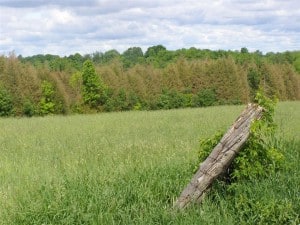Browning of the tips of the leaves on Eastern White Cedars is once again very noticeable in the Kawarthas. According to Taylor Scarr, provincial forest entomologist at MNR, the “browning” is the result of coincident attack by several of the cedar leafminers – tiny, native caterpillars (larvae) which eventually become moths – of the genus Argyresthia. The main culprit appears to be Argyresthia thuiella. Four species of leafminers attack white cedars in eastern Canada. The damage occurs when the larvae feed by tunneling through the tips of the leafy branchlets. In the process, the foliage begins to turn brown and is later shed. By holding the dead foliage up to the light, it sometimes possible to see the larvae within their feeding tunnels. The larvae pupate within the tunnels in the cedar leaves and small, silver-grey moths appear from late May until July. By June 11 last year, the tiny moths were very evident and would fly off in clouds when you shook the branches of the cedars.
Significant areas of defoliation from leafminers were also recorded last year and in 2011, especially in parts of Douro-Dummer Township. According to the Pest Diagnostic Clinic at the University of Guelph, removing and destroying infested branch tips before the moths appear will give adequate control in the case of light infestations on small ornamental cedars. White cedars can withstand considerable injury from leafminers before significant damage occurs.
Observer: Drew Monkman
